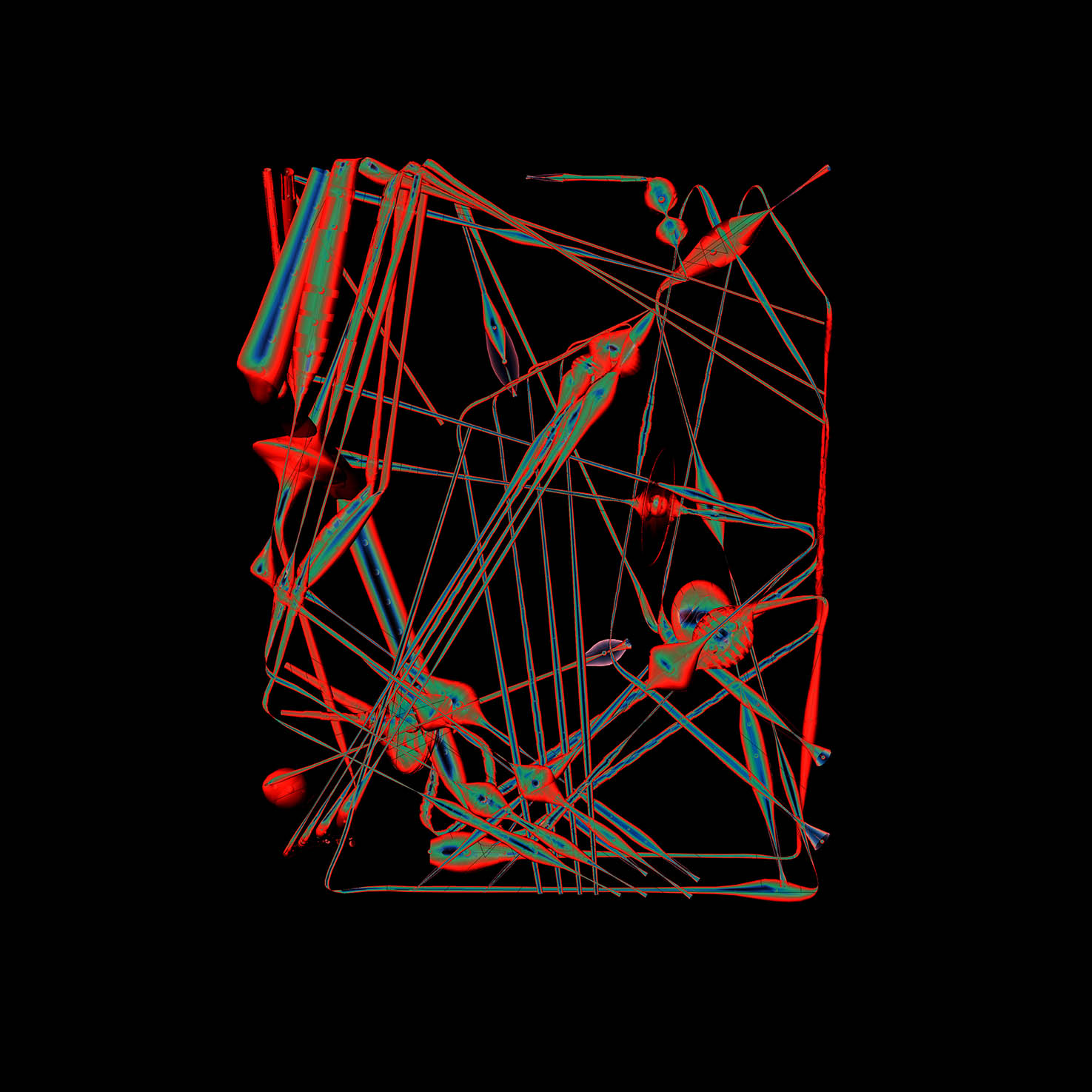
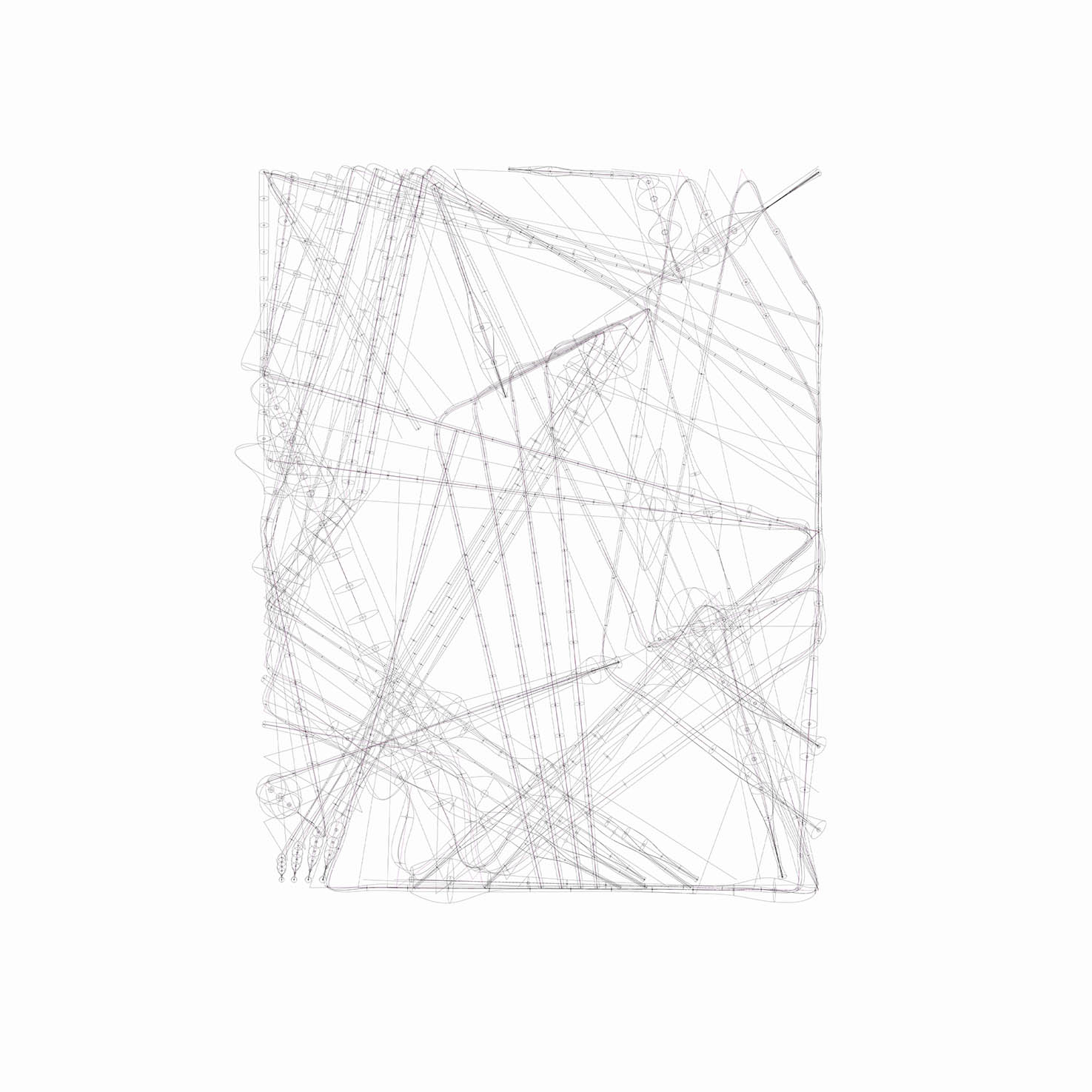

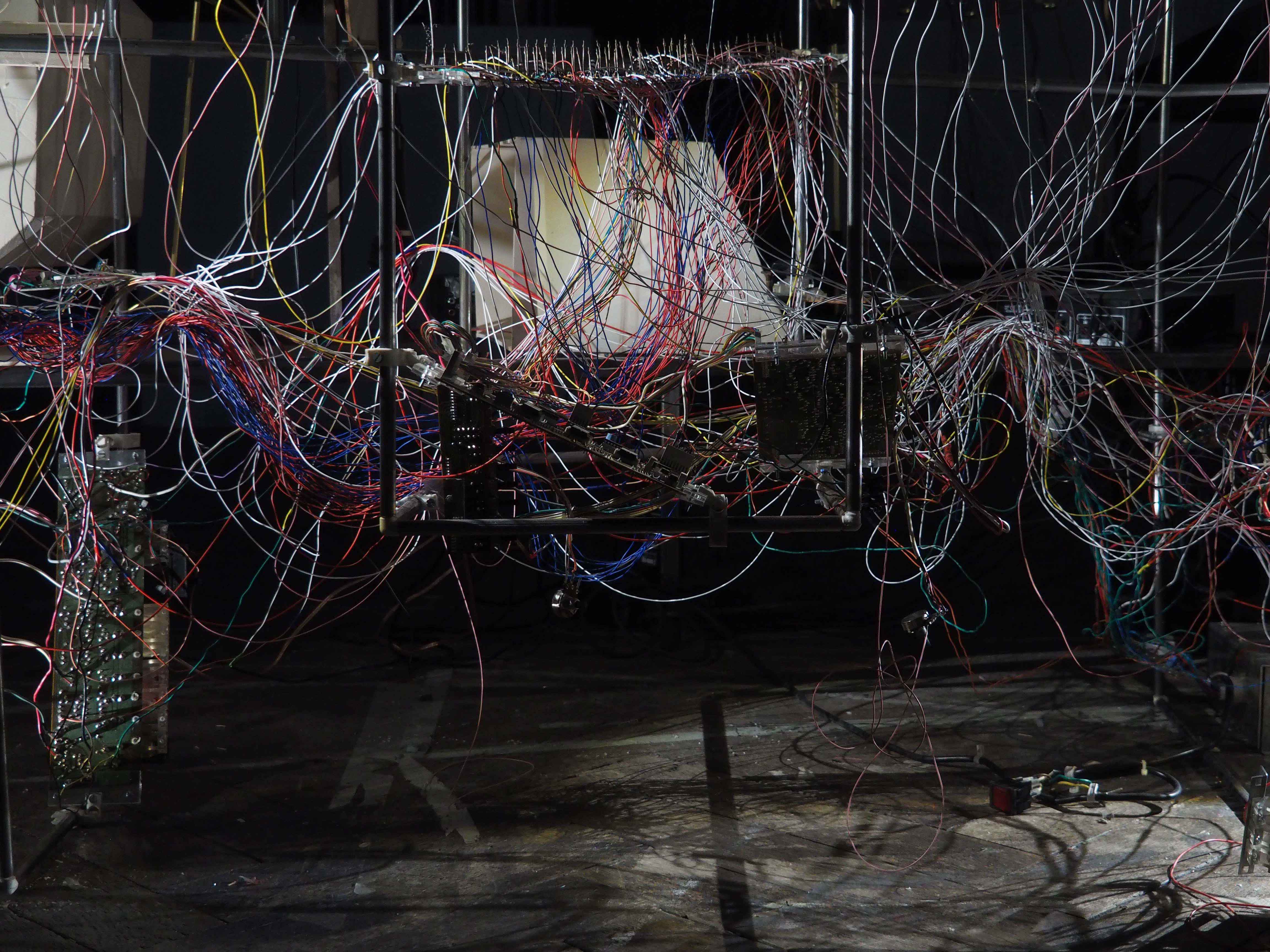

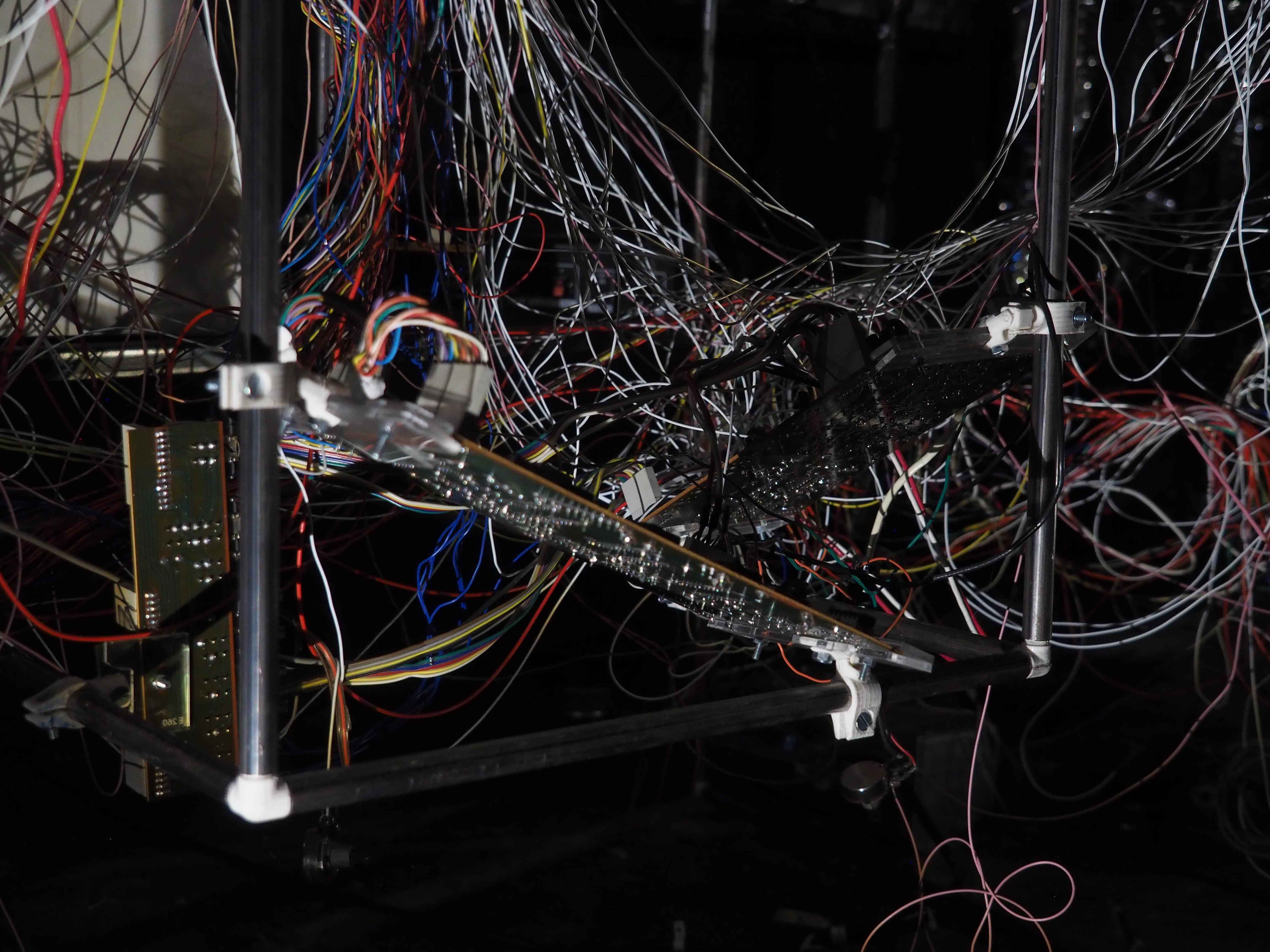
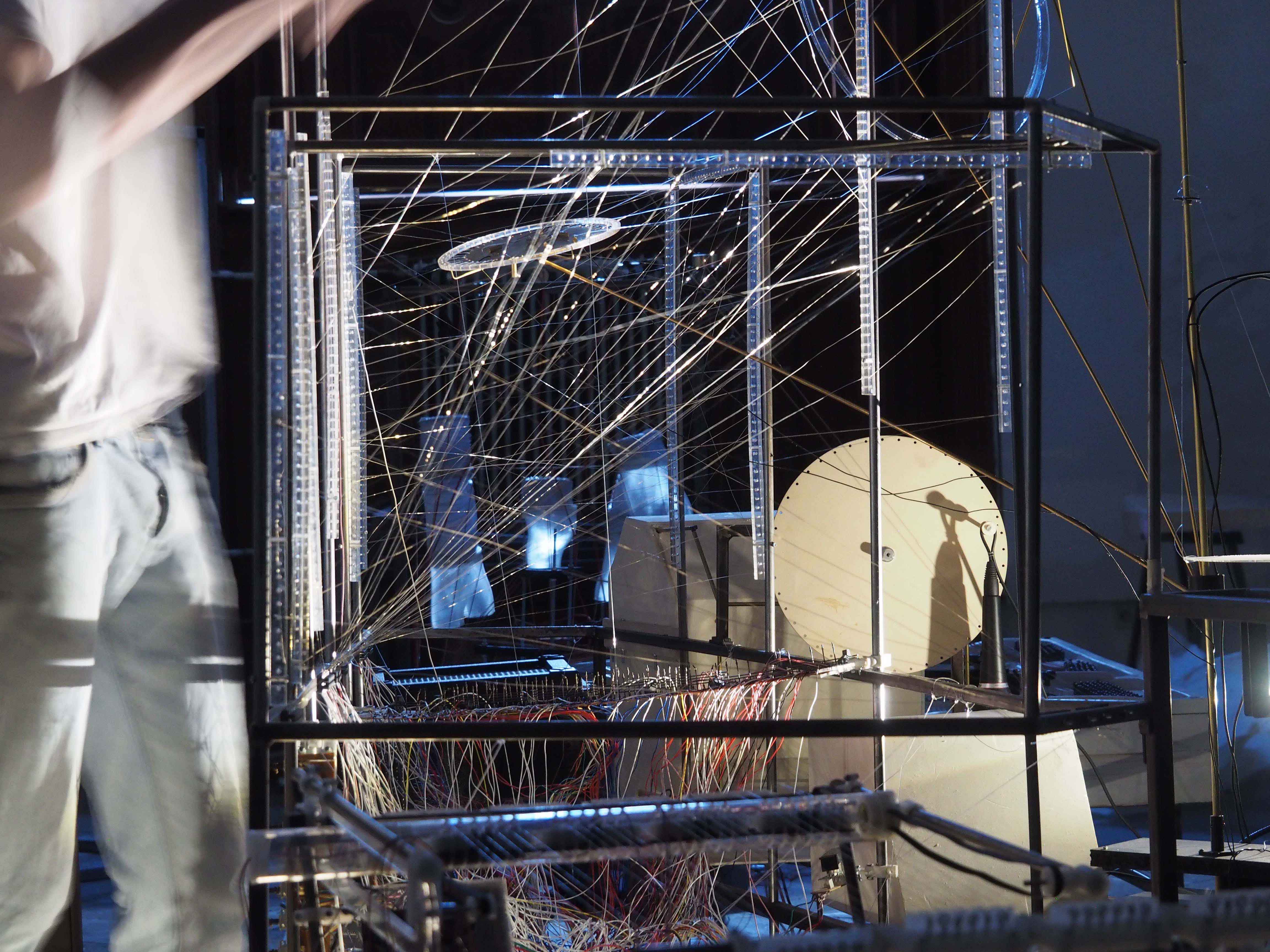







An electric organ built in the 70’s served as a rudiment for a new instrument or installation, altering both the inner circuits of the organ and adding its continuation and framework. Old circuit diagrams and trial and error were necessary in order to decode the organ. The instrument, a tangle of curves and surfaces vectorized in a visible system, produces sounds synthetically and electronically. The outer edges of the circuits are connected to a series of systems for transmission, starting with wire strings, with which resistors are actuated on the circuit boards. Their positioning in space on its own is creating a volatile pattern in space, only constrained phisically by a lighweight cubic skeleton, which is just as variable and shaping. It provides a system which can precisely adapt to the arrangement of the strained elements, the “organs” and is determined in its sculptural quality by the latter. The structure takes up the moment of repetition from the original instrument. Like on a marionette, the sounds are played from above. However, due to the multiple translation, disturbance and entanglement of the signal between the board and the player, immense loss of information arises. The design works against a targeted manner to the presicion and reliability of the old the instrument. This moment of unpredictability becomes visually perceptibleand allows a visual confrontation of the viewer with the structure.
listen 🎧